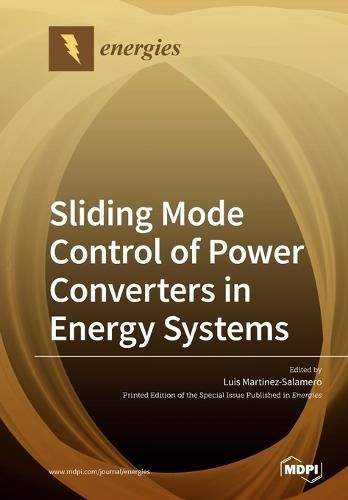Readings Newsletter
Become a Readings Member to make your shopping experience even easier.
Sign in or sign up for free!
You’re not far away from qualifying for FREE standard shipping within Australia
You’ve qualified for FREE standard shipping within Australia
The cart is loading…






This title is printed to order. This book may have been self-published. If so, we cannot guarantee the quality of the content. In the main most books will have gone through the editing process however some may not. We therefore suggest that you be aware of this before ordering this book. If in doubt check either the author or publisher’s details as we are unable to accept any returns unless they are faulty. Please contact us if you have any questions.
Renewable energies are becoming a must to counteract the consequences of the global warming. More efficient devices and better control strategies are required in the generation, transport, and conversion of electricity. Energy is processed by power converters that are currently the key building blocks in modern power distribution systems. The associated electrical architecture is based on buses for energy distribution and uses a great number of converters for interfacing both input and output energy. This book shows that sliding-mode control is contributing to improve the performances of power converters by means of accurate theoretical analyses that result in efficient implementations. The sliding-mode control of power converters for renewable energy applications offers a panoramic view of the most recent uses of this regulation technique in practical cases. By presenting examples that range from dozens of kilowatts to only a few watts, the book covers control solutions for AC-DC and DC-AC generation, power factor correction, multilevel converters, constant-power load supply, wind energy systems, efficient lighting, digital control implementation, multiphase converters, and energy harvesting. The selected examples developed by recognized specialists are illustrated by means of detailed simulations and experiments to help the reader to understand the theoretical approach in each case considered in the book.
$9.00 standard shipping within Australia
FREE standard shipping within Australia for orders over $100.00
Express & International shipping calculated at checkout
This title is printed to order. This book may have been self-published. If so, we cannot guarantee the quality of the content. In the main most books will have gone through the editing process however some may not. We therefore suggest that you be aware of this before ordering this book. If in doubt check either the author or publisher’s details as we are unable to accept any returns unless they are faulty. Please contact us if you have any questions.
Renewable energies are becoming a must to counteract the consequences of the global warming. More efficient devices and better control strategies are required in the generation, transport, and conversion of electricity. Energy is processed by power converters that are currently the key building blocks in modern power distribution systems. The associated electrical architecture is based on buses for energy distribution and uses a great number of converters for interfacing both input and output energy. This book shows that sliding-mode control is contributing to improve the performances of power converters by means of accurate theoretical analyses that result in efficient implementations. The sliding-mode control of power converters for renewable energy applications offers a panoramic view of the most recent uses of this regulation technique in practical cases. By presenting examples that range from dozens of kilowatts to only a few watts, the book covers control solutions for AC-DC and DC-AC generation, power factor correction, multilevel converters, constant-power load supply, wind energy systems, efficient lighting, digital control implementation, multiphase converters, and energy harvesting. The selected examples developed by recognized specialists are illustrated by means of detailed simulations and experiments to help the reader to understand the theoretical approach in each case considered in the book.